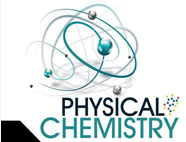


 علم الكيمياء
علم الكيمياء 
 الكيمياء التحليلية
الكيمياء التحليلية 
 الكيمياء الحياتية
الكيمياء الحياتية 
 الكيمياء العضوية
الكيمياء العضوية 
 الكيمياء الفيزيائية
الكيمياء الفيزيائية
 الكيمياء اللاعضوية
الكيمياء اللاعضوية 
 مواضيع اخرى في الكيمياء
مواضيع اخرى في الكيمياء
 الكيمياء الصناعية
الكيمياء الصناعية |
أقرأ أيضاً
التاريخ: 18-9-2018
التاريخ: 2023-08-26
التاريخ: 2024-08-17
التاريخ: 1-9-2019
|
Charges and dipoles can help bring molecules together for reaction, helping them to overcome their electronic repulsion and lowering their activation energy. But reactions can still take place even between completely uncharged molecules with no dipole, provided their molecular orbitals can interact. One of the old ‘tests’ for unsaturation was to treat a com pound with bromine water. If the brown colour disappeared, the molecule was unsaturated (contained double bonds). Spectroscopy means we rarely need to use such tests now, but the reaction is still an important one. An alkene reacts with bromine, even though the alkene and the bromine molecule have neither charge nor dipole. The attraction between these molecules is not electrostatic; instead, their electronic repulsion is overcome because the bromine molecule has an empty orbital available—the σ* orbital of the Br–Br bond— which can accept electrons from the alkene. Unlike the repulsive interaction between filled orbitals, the interaction between a fi lled and an unfilled orbital can lead to attraction and reaction. In fact, orbital interactions are also involved in the other two reactions on this page, but in those cases the orbital interactions are augmented by electrostatic attraction.
●To summarize the situation:
• In general, molecules repel each other, and need to overcome a barrier with a minimum amount of activation energy in order to react.
• Most organic reactions involve interactions between full and empty orbitals.
• Many, but not all, also involve charge interactions, which help overcome electronic repulsion.
• Some ionic reactions involve nothing but charge attraction. We don’t need to analyse whether charge or orbital interaction is the most important factor in bringing molecules together, but you do need to be aware that both may be involved to varying degrees.



|
|
|
|
حقن الذهب في العين.. تقنية جديدة للحفاظ على البصر ؟!
|
|
|
|
|
|
|
"عراب الذكاء الاصطناعي" يثير القلق برؤيته حول سيطرة التكنولوجيا على البشرية ؟
|
|
|
|
|
|
|
جمعية العميد تعقد اجتماعها الأسبوعي لمناقشة مشاريعها البحثية والعلمية المستقبلية
|
|
|